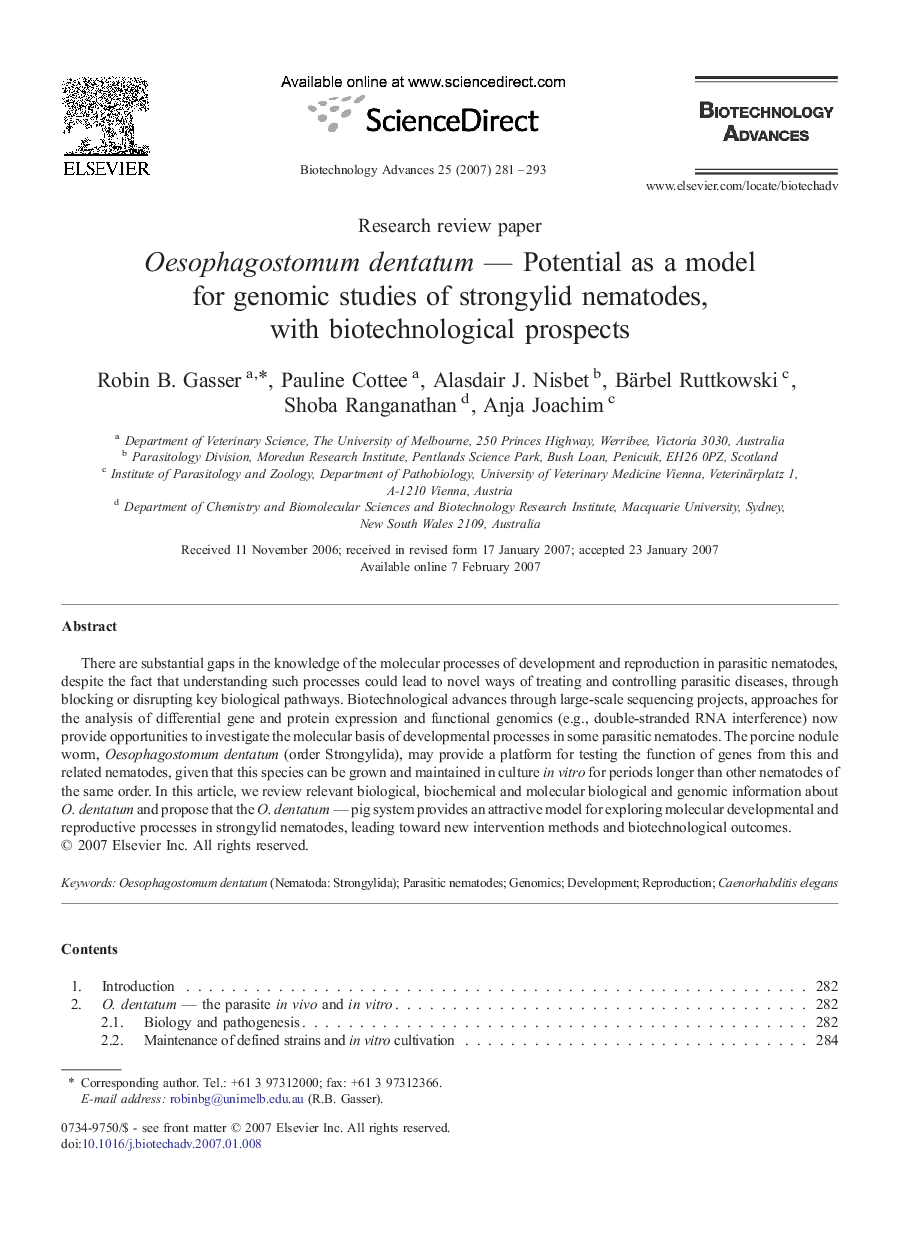| Article ID | Journal | Published Year | Pages | File Type |
|---|---|---|---|---|
| 14836 | Biotechnology Advances | 2007 | 13 Pages |
There are substantial gaps in the knowledge of the molecular processes of development and reproduction in parasitic nematodes, despite the fact that understanding such processes could lead to novel ways of treating and controlling parasitic diseases, through blocking or disrupting key biological pathways. Biotechnological advances through large-scale sequencing projects, approaches for the analysis of differential gene and protein expression and functional genomics (e.g., double-stranded RNA interference) now provide opportunities to investigate the molecular basis of developmental processes in some parasitic nematodes. The porcine nodule worm, Oesophagostomum dentatum (order Strongylida), may provide a platform for testing the function of genes from this and related nematodes, given that this species can be grown and maintained in culture in vitro for periods longer than other nematodes of the same order. In this article, we review relevant biological, biochemical and molecular biological and genomic information about O. dentatum and propose that the O. dentatum — pig system provides an attractive model for exploring molecular developmental and reproductive processes in strongylid nematodes, leading toward new intervention methods and biotechnological outcomes.
